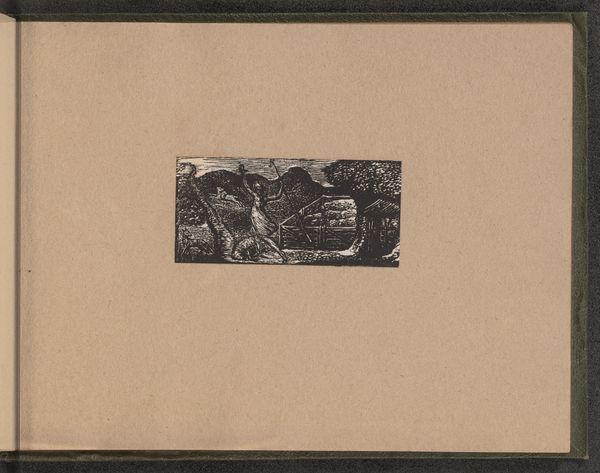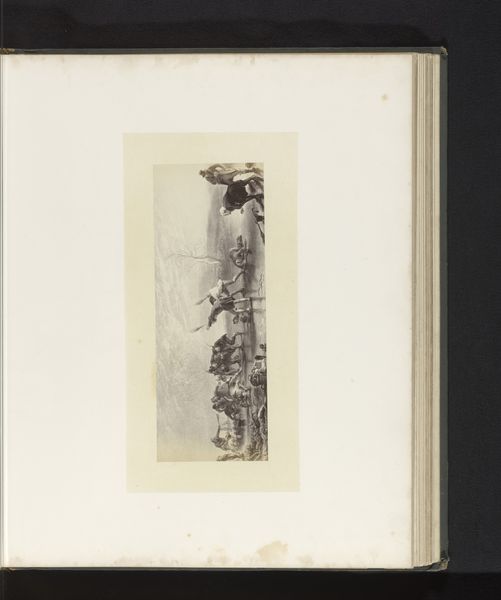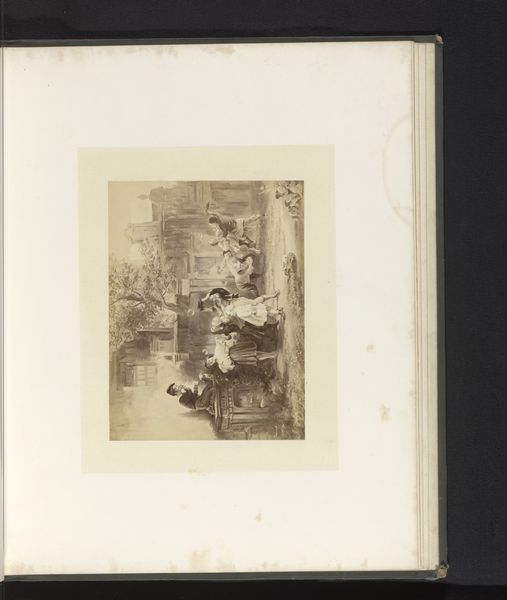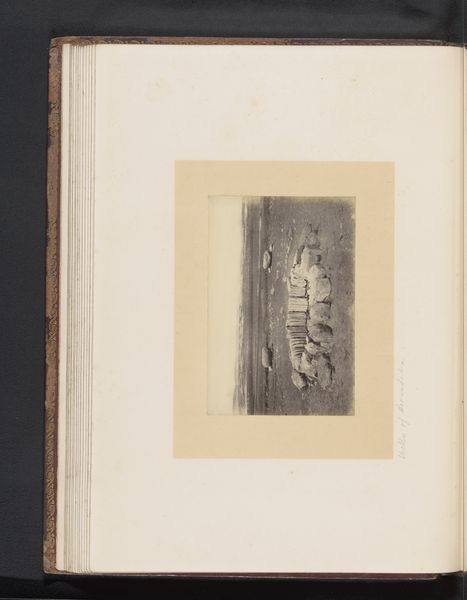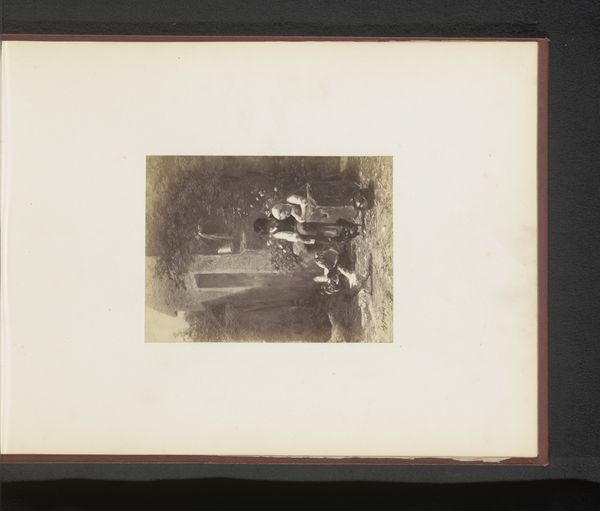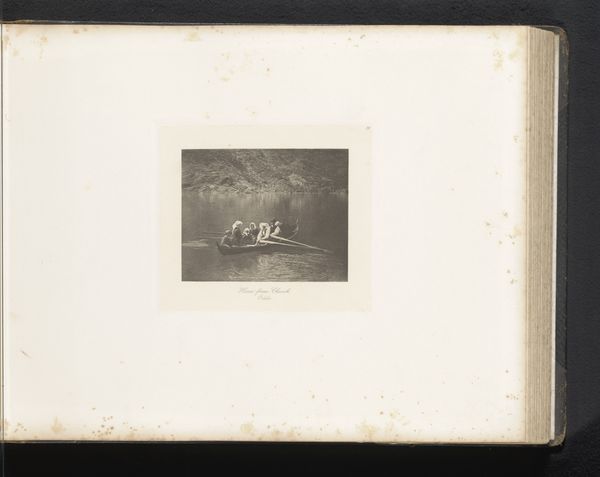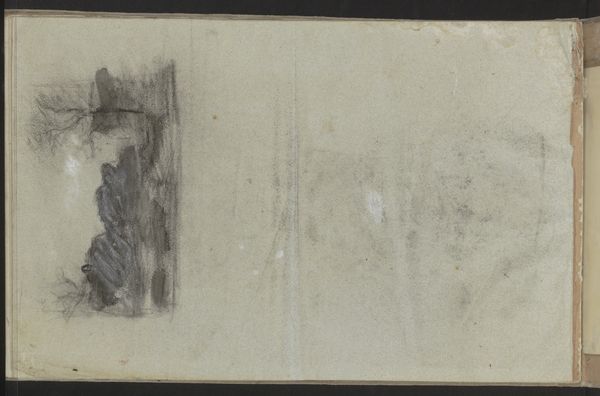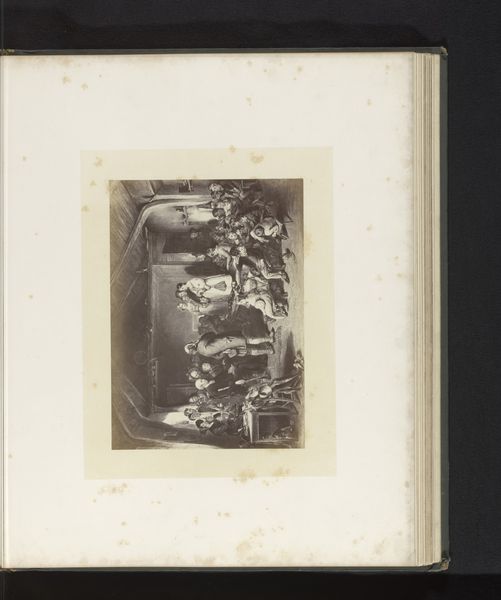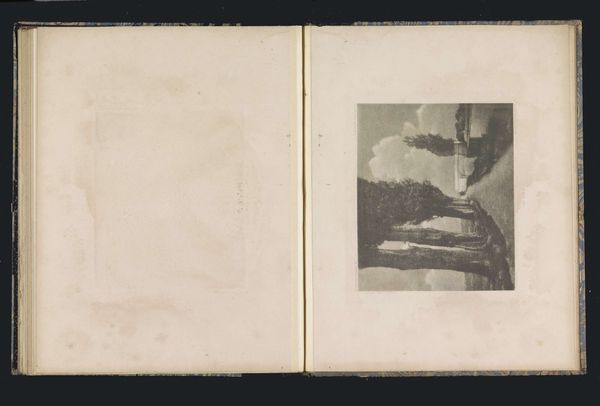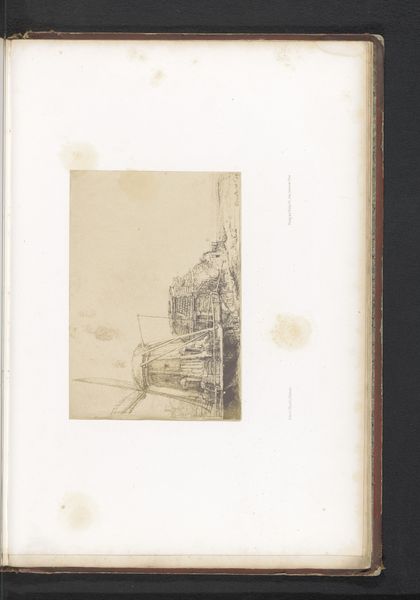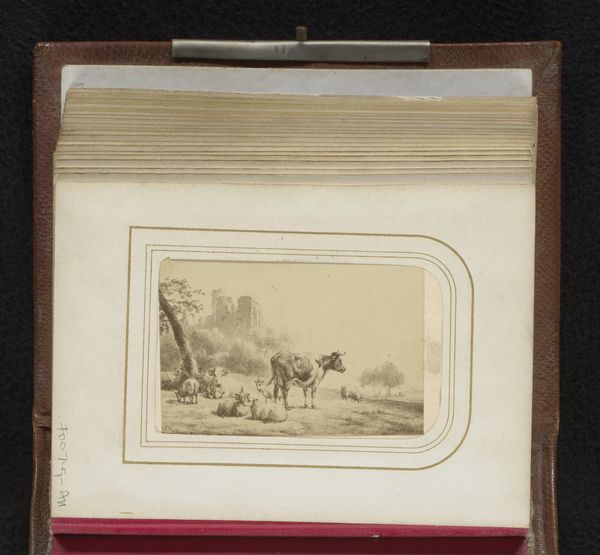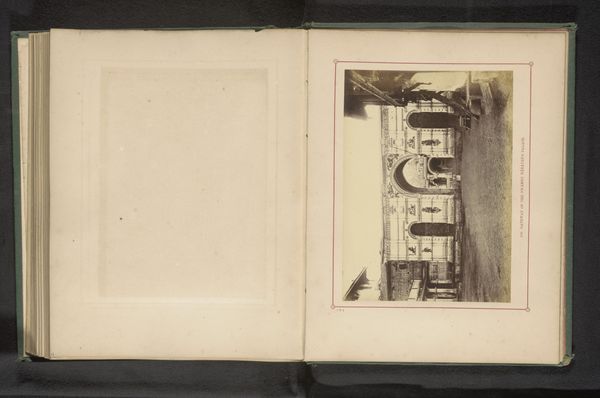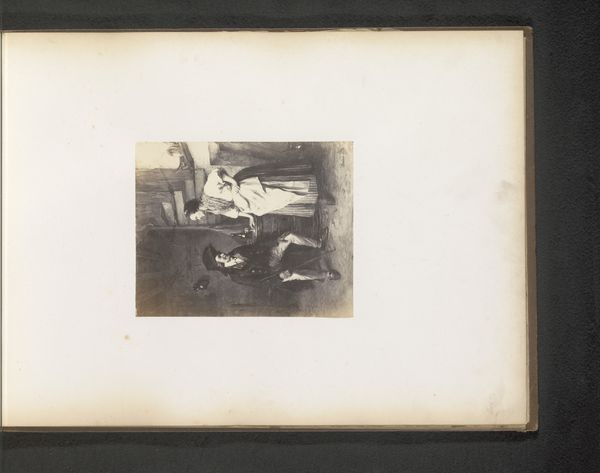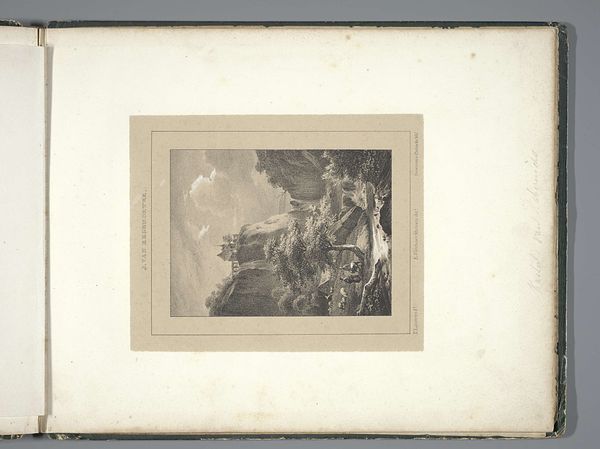
print, engraving
#
narrative-art
# print
#
landscape
#
romanticism
#
engraving
Copyright: National Gallery of Art: CC0 1.0
Curator: I’m struck immediately by how the miniature scale seems at odds with the strenuous labor depicted here. Editor: That's quite perceptive! This engraving, dating from 1821, is titled '"A rolling stone is ever bare of moss,"' and it's the work of William Blake. Curator: Blake, the visionary! One senses an immense weight, physically but also perhaps a burden of constant toil, even futility? Look how this figure struggles with that roller. It reminds me of Sisyphus. Editor: I think you're spot on. It is a Romantic rendering of an old proverb. Blake's stark, high-contrast imagery always brings intensity to any symbolism, but notice also the architectural details here. Curator: Indeed. Such rigid facades behind the struggling figure— are they prisons of the mind, societal expectations, or what? Editor: All those possibilities simmer beneath the surface. I interpret the absence of moss less as barrenness, as traditionally framed, and more like an enforced and manufactured absence on a cultivated space of labor, implying external pressure. It's Romanticism at its most rebelliously poignant. Curator: An anti-gardening stance perhaps? One stripping the worker, not the stone? Editor: Perhaps. The light and shadow add to the heavy atmosphere, emphasizing both the strain and also the artifice against organic potentiality. And I note a melancholic futility that resonates quite profoundly. Curator: It speaks poignantly, reminding us that there are multiple sides to a story. Even rolling stones could develop gardens, or little rebellions along the way. Editor: Ultimately, isn't that hope—an idea so typically and beautifully Blakean.
Comments
No comments
Be the first to comment and join the conversation on the ultimate creative platform.
